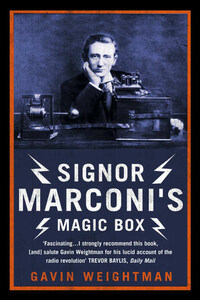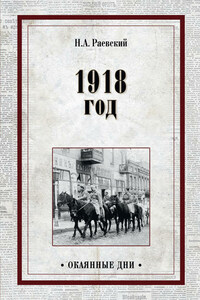It was the most fabulous invention of the nineteenth century. The public and the popular newspapers regarded it as nothing short of miraculous, and the leading scientists of the day in Europe and America, whose discoveries had made it possible, could not understand how it worked. Wireless in its pioneer days had nothing to do with home entertainment: no speech or music was transmitted. But the tap, tap, tap of the telegraph key spelling out messages which had travelled mysteriously through the âetherâ was exciting enough in a world still mostly horse-drawn and coal-fired, a world without cinema or the motor-car, in which the telephone was still an expensive luxury and great cities like London and New York had only recently winced at the brightness of electric light.
The wider world first learned about the possibilities of wireless telegraphy, as the new invention was called, in 1897. In November that year the very first wireless station was established in the exclusive Royal Needles Hotel. This splendid clifftop Victorian pile took its name from the nearby pillars of eroded rock which jut into the sea on the western corner of the Isle of Wight, a short ferry-ride off the south coast of England. An odd assortment of wires strung out on posts tethered to the ground to secure them against the stiff sea breezes and the not infrequent gales was the only outward sign that mysterious signals were being sent to the steamers, packed with skylarking holidaymakers, which plied the coast. Guests at the Royal Needles were aware when the transmitter was in operation, for they could hear and sometimes see the crack of electrical sparks activated by a Morse code key pressed by one of the operators inside the hotel. The range of these signals was only a few miles. But the fact that it was possible at all to establish, by remote control, communication with a ship steaming along at a rate of knots, even when it was lost to view behind a cliff, was nothing short of astonishing. The wonders of science, it seemed, would never cease.
Only the year before, the newspapers had been full of accounts of the ânew photographyâ called X-rays, which could âseeâ through solid objects. The public now had to take in the amazing possibilities presented by the ânew telegraphyâ. Like most powerful new inventions, wireless had the potential to bring both good and evil to the world: could it be used, perhaps, as a weapon? Might an electric wave aimed at a battleship blow up its explosive magazine as surely as any shell from a shore battery?
This ânew telegraphyâ was not only mind-bending in its apparent defiance of contemporary scientific understanding; there appeared to be a very real prospect of it completely replacing the network of telegraphic cables which in the previous half-century had been strung out over land and laid across the ocean beds, at colossal expense. At the very least it meant that ships at sea, including the great liners which were then carrying millions of European immigrants to North America, need never be out of contact with each other and with New York, Liverpool and London. The big question was: how far could these invisible waves travel through the âetherâ, carrying Morse-coded messages which were decipherable at a receiving station?
In 1897, nobody had the answer to that question. The great majority of physicists who worked on what were known as âHertzian wavesâ very much doubted that they could be used for communication over distances greater than a mile or two. Even that range, which had already been achieved, was causing some puzzlement, for it was not known through what medium the waves from a wireless transmitter really travelled. Did they go through hills, or over them? Did they bend around the curvature of the earthâs surface? As they were akin to light and travelled at the same speed, why did they not simply dissipate into the atmosphere, never to be retrieved and decoded on the ground?









